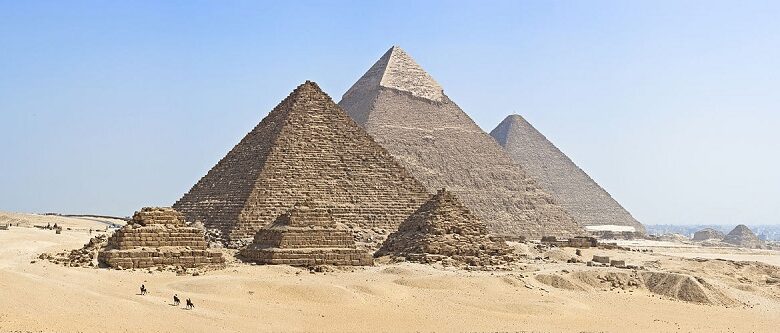New Study Unveils Ancient Nile Branch as Key to Pyramid Construction

In a groundbreaking discovery, scientists may have finally solved the enduring mystery of how the iconic pyramids of Egypt, including the world-famous Giza complex, were constructed more than 4,000 years ago. Researchers from the University of North Carolina Wilmington have unearthed evidence suggesting that these monumental structures were built along an ancient, now-buried branch of the River Nile.
This revelation stems from the work of an international research team that employed advanced radar satellite imagery, historical maps, geophysical surveys, and sediment coring techniques to identify the location of this lost river branch. Named the Ahramat branch, derived from the Arabic word for pyramids, this ancient waterway is believed to have spanned approximately 64 kilometers (39 miles) in length and varied between 200 to 700 meters (656 to 2,296 feet) in width. The branch likely played a crucial role in transporting the massive stone blocks used in pyramid construction.
For decades, archaeologists speculated that ancient Egyptians utilized nearby waterways to move these heavy materials. However, the precise location, dimensions, and proximity of such a waterway to the pyramids had remained elusive until now. Professor EmanGhoneim, one of the study’s authors, noted that “nobody was certain of the location, the shape, the size or proximity of this mega waterway to the actual pyramids site.”
The research team employed radar technology to penetrate the desert sands, revealing hidden features beneath. These images uncovered buried rivers and ancient structures at the foothills where the majority of the Egyptian pyramids are situated. The findings, published in the journal Communications Earth and Environment, indicate that the Ahramat branch was active and operational during the time these pyramids were built, facilitating the transportation of heavy materials.
Dr. Suzanne Onstine, another co-author of the study, emphasized the significance of this discovery in understanding pyramid construction. “Locating the actual river branch and having the data that shows there was a waterway that could be used for the transportation of heavier blocks, equipment, people, everything, really helps us explain pyramid construction,” she told the BBC.
The team’s findings also explain the high concentration of pyramids between Giza and Lisht, an area that is now an arid part of the Sahara desert but was once nourished by the Nile’s waters. The proximity of the Ahramat branch to these pyramid complexes suggests that it was instrumental in their construction, allowing ancient Egyptians to harness the river’s energy to transport the colossal stone blocks with significantly less effort compared to manual labor.
The discovery of the Ahramat branch not only sheds light on the logistics of pyramid building but also enhances our understanding of the ancient Nile’s geography. The Nile has always been a lifeline for Egypt, crucial to the civilization’s agricultural and economic activities. This research underscores its historical significance by highlighting its role in one of humanity’s most remarkable architectural achievements.
The newly discovered river branch buried under millennia of desert sands and drought, represents a crucial piece of Egypt’s ancient puzzle. As researchers continue to analyze the data, this discovery promises to provide deeper insights into the engineering feats of the ancient Egyptians and the sophisticated methods they employed to construct their awe-inspiring monuments.






